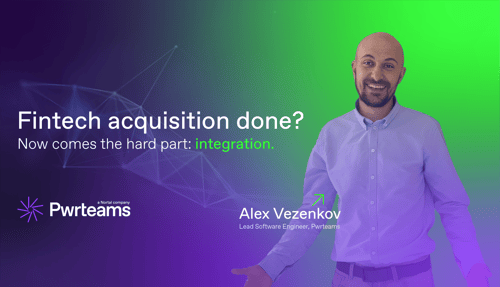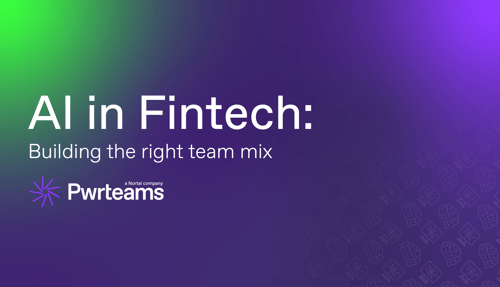Artificial Intelligence in IoT – 4 Examples How to Make Use of It

Technologies like Internet of Things (IoT) and artificial intelligence (AI) tell us that the future is now. Remarkably, these technology concepts perfectly complement each other. The number of connected devices will only expand and the mass of data produced by them will grow to head-spinning volumes. Artificial intelligence can help organizations gain meaningful insights from big data that IoT provides. But how do you get the insights? Has anyone already made use of artificial intelligence in IoT? Let’s take a look.
IoT in Action: Can You Feel Its Impact?
Endless information flow is streamed from IoT devices, sensors and chips, empowering people in every aspect of their lives. IoT puts the “smart” in homes, helps brands impress customers, makes industrial equipment safer and gives real-time about the patients’ health.
However, taking business advantage of IoT is not that easy as it seems. Dozens of IT vendors are announcing IoT platforms and offering their consulting services. But their customers often don’t even realize which sphere of their business would benefit from IoT and what they should do with the generated data.
Another issue is that the amount of data generated by IoT devices outnumbers the accepted approaches to dealing with it. Making sense out of machine data and using it to achieve desired business goals is quite a task to perform. Humans can’t possibly process, review and interpret this much data. Even computer software can’t do that. This is where artificial intelligence and machine learning (ML) algorithms come in.
AI and IoT: Why Do We Need It?
The potential of big data is incredible. AI in IoT is how we unlock it. According to Deloitte, the acquisition of AI and IoT startups was growing fast in 2017 and is expected to hit record numbers in future. AI-focused IoT startups deal with intelligent reasoning and speedy data analysis showcasing it across industries.
Artificial intelligence is a functional solution to managing multiple connected IoT elements. On top of that, its unlimited processing and learning abilities are critical for making sense of piles of data transmitted by IoT devices. Companies can achieve this in practice by using a powerful subset of AI which is called machine learning.
IoT and Machine Learning
IoT is the data “supplier”, while machine learning is the data “miner”. To make the data supplied by IoT work, it needs to be refined. Dozens of IoT sensors and external factors are producing a myriad of data points. The “miner’s” task here is to identify correlations between them, extract meaningful insight from these variables and transport it to the storage for further analysis.
With the traditional analytical approach to data, a system needs past data and some expert thought to explain and report results based on data processing. IoT and machine learning works more for prediction instead. It starts with the desired outcome and searches interactions between input variables to meet the criterion. So, when an ML algorithm receives a goal, it “learns” on the IoT data. These factors are critical for achieving the set result.
Another merit of applying ML to IoT data is in the ability to automatically improve its algorithms. With more data being received and aggregated, a smart system returns even more accurate predictions. In this way, businesses can receive the most rational decision without actual “thinking.” The artificial cleaver system has answers to various aspects, starting from the machine safety or power reduction to the increased supply of personalized goods and services.
Examples of AI in IoT
Let’s take a closer look at industries and businesses that have already managed to cut costs, create a better user experience and open up new business models with AI in IoT. Perhaps, these examples will make you consider implementing AI and IoT in your business.
Industrial Internet of Things (IIoT)
The widespread use of IoT devices with industrial equipment provides a plethora of data. With AI algorithms applied to the gathered data, business owners can detect potential issues, fix them in advance and apply these insights to other cases. The system is gradually taught to recognize external and internal factors that have an impact on the operation of the machines. By optimizing resources and increasing industrial safety, the entire production process is streamlined.
Predictive maintenance is the brightest showcase of AI used in IIoT. Predictive or perspective maintenance means that a system powered by the machine learning algorithms can predict a need for maintenance on a plant floor. On top of that, artificial intelligence can help in creating self-healing and self-calibrating IoT devices like sensors, inductors or transmitters. The biggest benefits that AI adds to the IIoT due to the described capacities are the reduction of maintenance costs and downtime.
Healthcare
The healthcare industry generates showers of data. Sensors from medical devices, healthcare mobile apps, fitness trackers and digital medical records have been producing and collecting patients data for years. The AI and IoT approach can help predict diseases, suggest preventive maintenance and provide drug administration. When it comes to health protection or disease control, patients and hospitals would welcome the benefits that come with the AI and IoT approach.
Smart Home
The idea of a fridge “communicating” with a smartwatch is still just a concept. Even so, “intelligent” vacuum cleaners, doorbells, and lightning systems are found on the market in good supply. According to IDC, consumers will make more investments in smart home ecosystems to the tune of $63 billion by 2020. Will there be a place for artificial intelligence at home which is “smart” enough already? We bet it will.
Artificial intelligence means even bigger automation in a smart home. Since the entire idea of connected objects is to make life easier, more automation sounds great. On top of that, AI can make life in smart homes even more pleasant. AI systems can “learn” your mood and preferences, as well as analyze your interaction with home objects. With such knowledge, it can adjust the temperature for both heating and cooling, adjust lighting, put on the music you like, and close or open windows depending on the weather. IoT and machine learning can also water plants when sensors state the dry soil and start a vacuum cleaner every Saturday at 1 PM.
Autonomous Vehicles
Cars are actively trying to outpace human intelligence on the roads. With complex sensors, cameras and other hard- and software, self-driving vehicles become less futuristic and more real. A self-driving car can gather tons of information about roads and their conditions, navigation, traffic and other factors. When an autonomous car is driving, an IoT-based system in the vehicle can share information about the road and the moving vehicle itself. This information is then accumulated and processed by a car’s computer. Using its AI, a vehicle learns and reacts to what the data has shown.
One more remarkable feature of autonomous vehicles is their massive learning ability that’s steering the driverless car concept to greater safety. The way in which vehicles will communicate with each other will determine how much users will trust the artificial intelligence behind a self-driving car.
The Bottom Line
AI and machine learning, as its subfield, are a huge leap for businesses that make active use of IoT. Despite certain concerns largely connected with safety and security of AI in IoT, a combination of these disruptive technologies has already been successfully tried out. Business goals become more attainable with actions taken in advance. The ability to analyze, predict and automatically adjust to a particular need is highly prized.
When it comes to AI and IoT, global tech leaders have already learned some ropes. As Google, Amazon, Tesla, Uber, and other tech giants go on exploring intelligent tech, one thing is certain – the impact of AI and IoT is going to be tremendous.
READ ALSO
Write your own
success story
with Pwrteams!
Share your details in the form, tell us about your needs, and we'll get back with the next steps.
- Build a stable team with a 95.7% retention rate.
- Boost project agility and scalability with quality intact.
- Forget lock-ins, exit fees, or volume commitments.


